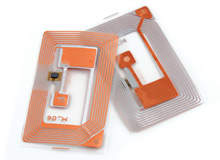
In 1999, the Institute of Medicine (IOM) in its report ‘To Err is Human: Building a Safer Health System’ estimated that between 44,000 and 98,000 deaths per year were related to medical errors in hospitals. In addition, 5$ of patients acquire nosocomial infections, indicating a desperate need to improve patient safety. The report identified other adverse events that produce serious morbidity at equally alarming rates.
Since the publication of IOM’s report, many healthcare organisations have begun implementing procedures and technologies to improve patient safety. Some of the early technologies are based on linear barcode (1D barcode) technologies. As the use of linear barcodes has expanded, their limitations have become apparent.
Specific concerns include: the need for a direct line-of-sight; the manual scanning process required; scanning multiple barcodes on an item in the correct order; easy duplication; limited information; and easy accidental defacing.
Radio frequency identification (RFID) technology was proposed as a possible technology to overcome the limitations of barcodes. The idea was that well-designed RFID-based systems could achieve perfect identification of every item in a hospital, including patients, staff and devices, without modifying existing clinical processes and operational procedures.
As with most emerging technologies, some of the initial assumptions about the RFID technology have not turned out to be correct. The cost and performance of passive RFID tags have not improved as quickly as anticipated and full-scale passive RFID system implementation has therefore been slow. The delay in the arrival of low-cost passive RFID systems, combined with the performance limitations of the commercially available products, has led healthcare providers to investigate active RFID systems.
See Also:
Active RFID systems, which were originally considered too expensive for fast adoption, have been successfully implemented at many hospitals for asset management applications. Now the infrastructure built for asset management is being used to implement additional applications such as patient tracking, staff management, ED process improvements, monitoring hand-washing, and blood product tracking. The anecdotal evidence from these RFID implementations suggests that active RFID systems for asset tracking provide an acceptable return-on-investment (ROI).
How well do you really know your competitors?
Access the most comprehensive Company Profiles on the market, powered by GlobalData. Save hours of research. Gain competitive edge.

Thank you!
Your download email will arrive shortly
Not ready to buy yet? Download a free sample
We are confident about the unique quality of our Company Profiles. However, we want you to make the most beneficial decision for your business, so we offer a free sample that you can download by submitting the below form
By GlobalDataAsset management
In the acute care hospital setting, the quick location and procurement of the right assets can be the difference between life and death for patients. Although high availability of assets allows for fast reaction times and life-saving care, the overabundance of such assets can put such care at an untenably high cost with most assets sitting unused for the majority of the time. For obvious cost constraints, assets must be shared and therefore managed efficiently to ensure that they are available and in operational condition when needed. The key concerns are:
Finding equipment. A recurring issue for nurses in a hospital is how to locate equipment, such as IV pumps and wheelchairs, in a timely manner. It is not uncommon for a nurse to spend 40$ or more of her/his time looking for equipment. An active RFID system can provide real-time location information.
Patient and staff location management. A modified asset tracking active RFID tag can be attached to a patient wristband, allowing tracking of a patient using the existing infrastructure. For staff, the name tag can be modified to contain an active RFID tag. The graphics user interface (GUI) and data management for patient and staff tracking must be designed to meet the privacy and clinical requirements of each institution.
Rental equipment management. On patient admission, equipment needs are identified and any equipment that the hospital does not currently have will be rented. In most cases, the starting time of rental equipment is well known since the rental process is usually initiated by the admission of the patient requiring the device or an acute shortage of certain devices. However, many hospitals do not have a reliable process to manage the timely return of rental equipment. An active RFID system can improve management by monitoring equipment location and movement.
Lost items and theft. Misplacing or losing medical devices at hospitals is not uncommon. This problem is often referred to as shrinkage. The financial management of high shrinkage items lacks a reasonable method of preventing the loss of these devices. Shrinkage impacts a hospital financially and can interfere with clinical services. RFID systems can reduce shrinkage by quickly locating misplaced devices and identifying unusual device movement that may be indicative of theft.
Inventory control. There is a tendency to maintain an excess inventory of devices to prevent potential negative impacts on patient safety. Caregivers will often hoard devices to ensure their availability. Due to hoarding and/or gross mismanagement of devices, it is not unusual to find a hospital that has many more IV pumps than it has patient beds. RFID systems can improve inventory control by maintaining a more precise real-time location and status of items, decreasing hoarding.
Cleaning/sterilisation. Documenting how each device has been cleaned after being used with a patient and before being used with another patient is a very tedious and difficult task. It is not uncommon to find a hospital without a reasonable working solution. As a device moves through the cleaning and sterilisation process, its location can be accurately determined without human involvement. In addition, if the staff location is collected at the same time, the complete cleanliness status of a device can be inferred.
Hand washing. It is one of the most important processes in reducing nosocomial infections, yet most hospitals do not have an effective method of managing how often hands are being washed by staff and visitors. However, it is possible to infer the hand washing with an automatic sink if the location of staff and visitors are known.
Service and maintenance. One of the major challenges with biomedical devices is maintaining inspection and service standards for each device. Institutions need to know when and how each device was inspected and serviced.
The biggest obstacle to effective device maintenance is finding the devices that are due for inspection and service. RFID systems can reduce the time needed to locate a device. They may also enable a system that automatically determines the normal service needs of a device on a daily basis, on an as-needed basis, or whenever the tag is read.
Technology selection criteria
Applications require a system that can automatically identify a large number of mobile devices at a range of 5m with high reliability and in real time. The read range and real-time requirements can be met with passive RFID systems only through an extensive and intrusive reader deployment. Active RFID systems provide a significantly greater performance level than passive RFID systems, and can meet the performance requirements with minimal reader deployment.
There are many different attributes of active RFID asset management systems. The selection criteria we have used for selecting an optimised active RFID system for a hospital environment include: existing workflow, tag size, tag battery life, spatial (location) resolution, tag density, system type, Wi-Fi utilisation, user interface, interference with existing equipment, installation cost, maintenance and ROI.
The selected system for the pilot was based on the smallest available active RFID tag using the 433Mhz frequency with an estimated battery life of four years at 20-second beaconing time intervals. The communication protocol is unidirectional – each tag sends out its unique identification information at a fixed time interval and readers are responsible for capturing the information. There was not any electronic interference with existing equipment at the facility.
A new set of wires were pulled to install readers since the system did not use the previously installed 802.11 access points. The installation was much easier than expected, possibly due to the fact that the hospital was relatively new and these readers were powered by DC power.
Start-up issues
The installation of the reader system was done without any major issues. Similarly, the installation of the application system was accomplished without significant issues. There were, however, two primary challenges: a) how to attach a tag to a device or to a patient; and b) how to manage the information database.
Attaching a tag to various medical devices required a disciplined methodical approach to locating and tagging objects of interest. The surfaces of several devices required careful cleaning and/or preparation before the tags could be successfully attached. Patients were tagged by attaching a modified asset management tag to their wrist bands.
This pilot highlighted issues of patient comfort and tag recovery upon patient discharge. The database management of the tagged items was more difficult than anticipated. The original database was populated by typing in the information manually as each device was tagged. This manual process created many errors and discrepancies, which had to be cleaned up.
Initial observations
After two months of using the system, the movement data indicated that more than 25$ of IV pumps did not move for at least three weeks. This data seemed to suggest that the system was not functioning correctly. The system was recalibrated and data collection resumed. The second set of data displayed similar non-motion patterns of the IV pumps, suggesting that at least 25$ of IV pumps were not being used at any one time.
Data also showed the relationship between the number of IV pumps on the floor and the total number of IV pumps at the hospital. It showed that current practices do not efficiently utilise the IV pumps, therefore concluding that removing 20$ of IV pumps will not detrimentally impact patient care. A 20$ reduction in IV pumps can yield an ROI of less than two years for the system.
2D barcode augmentation
In order to overcome database management issues, as well as a few shortcomings of the deployed RFID technology, a 2D barcode system to augment the RFID system was tested. We have observed that with minimum change in workflow and with minimum cost, we can create accurate entries in the database reliably.
Certain items in the hospital setting are subjected to sterilisation cycles that involve extremes of temperature, humidity, chemical and X-ray environment. Most electronic circuitry including active and passive RFID tags may not survive such processing. We are investigating a new laser system, which can create 2D barcodes on metal surfaces without damaging the integrity of the surface.
Ongoing work
We are extending current user interfaces to improve usability and information content. The higher resolution location data is being used to improve processes in ER, ICU and OR environments. We are working to extend the use of 2D barcodes to wristbands and active RFID tags as well as other items, which could provide data-rich real-time information to clinicians and management even when networking is not available.
Due to a successful pilot study showing that a carefully designed active RFID asset management system can be cost effective, more hospitals are implementing an active RFID system. We have noticed that the use of 2D barcodes in conjunction with the active RFID asset management system can improve the effectiveness of the system at minimal expense. In turn these systems will provide a data-rich environment for clinicians and administrators.
Extending the capability of asset management systems to track patients and staff may improve patient safety in ER, OR and ICU environments while helping to reduce nosocomial infections. Even though we are in the early days of using RFID technologies in a clinical setting, we believe strongly that active RFID and 2D barcode technologies, without passive RFID, will positively impact and improve patient safety.
Research material has been referenced in this text. For full details please contact the editor, andrewtunnicliffe@spgmedia.com.
Acknowledgement
The authors would like to thank Chuck Hall, President of Eastern Group, HCA, for his vision in using an active RFID system to improve patient care in a hospital and Dan Neuwirth, COO of Agility Healthcare Solutions, for his support and help throughout this project.







